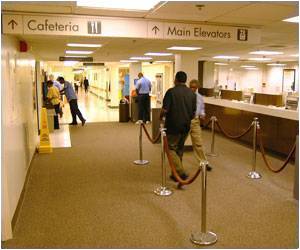According to a study nursing homes that used a multicomponent intervention had a lower rate of use of physical restraints.

Sascha Kopke, Ph.D., of the University of Hamburg, Germany, and colleagues tested the effectiveness of a guideline- and theory-based multicomponent intervention to reduce the prevalence of physical restraints used in nursing homes. The randomized controlled trial of 6 months'' duration was conducted in 2 German cities between February 2009 and April 2010. Nursing homes were eligible if they had 20 percent or more residents with physical restraints. Eighteen nursing home clusters were included in the intervention group (2,283 residents) and 18 in the control group (2,166 residents). All nursing homes completed the study and all residents were included in the analysis.
The intervention was based on a specifically developed evidence-based guideline and applied the theory of planned behavior. Components were group sessions for all nursing staff; additional training for nominated key nurses; and supportive material for nurses, residents, relatives, and legal guardians. Control group clusters received standard information. The primary measured outcome was the percentage of residents with physical restraints (bilateral bed rails, belts, fixed tables, and other measures limiting free body movement) at 6 months, as assessed through direct unannounced observation by investigators on 3 occasions during 1 day.
At the beginning of the study, the prevalence of physical restraint use was comparable between groups: 31.5 percent in the intervention group vs. 30.6 percent in the control group. After 6 months, physical restraint prevalence was significantly lower in the intervention group, 22.6 percent, vs. 29.1 percent in the control group. All physical restraints were used less frequently in the intervention group compared with the control group. At 3 months, results were similar: intervention group: 23.9 percent, vs. 30.5 percent in the control group.
The researchers also found that results for falls, fall-related fractures, and prescriptions of psychotropic medication showed no statistically significant differences between groups.
"… considering the consistent effects after 3 and 6 months, we are confident that a ''culture change'' has been achieved, resulting in a continuing avoidance of physical restraints. As it seems infeasible to further optimize the intervention with justifiable effort, more pronounced reduction or even complete prevention of physical restraint use may require more stringent implementation of legal regulations with clear penalties. The results of this study are likely generalizable to countries with comparable legal and professional conditions."
Advertisement
Source-Newswise










